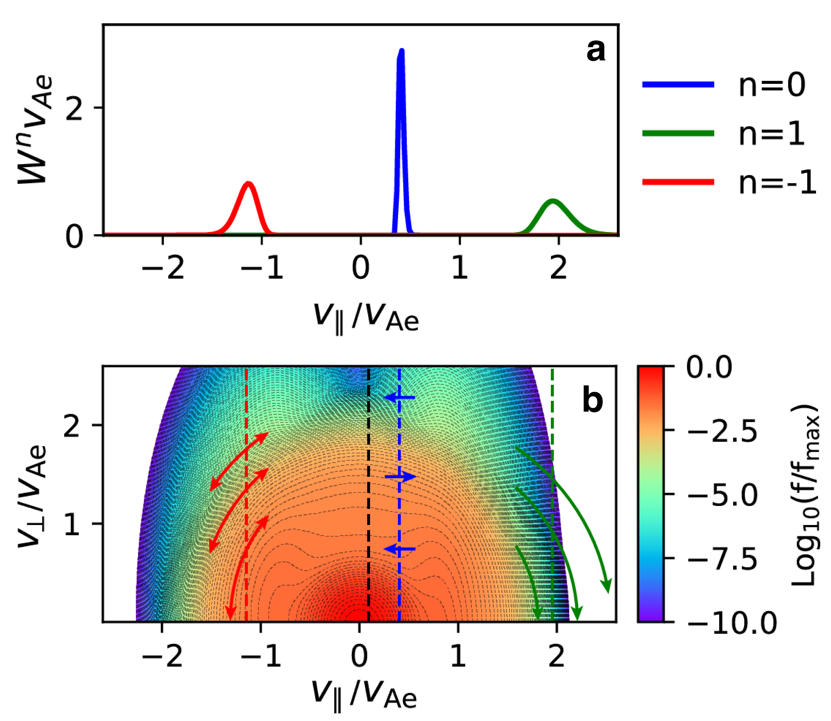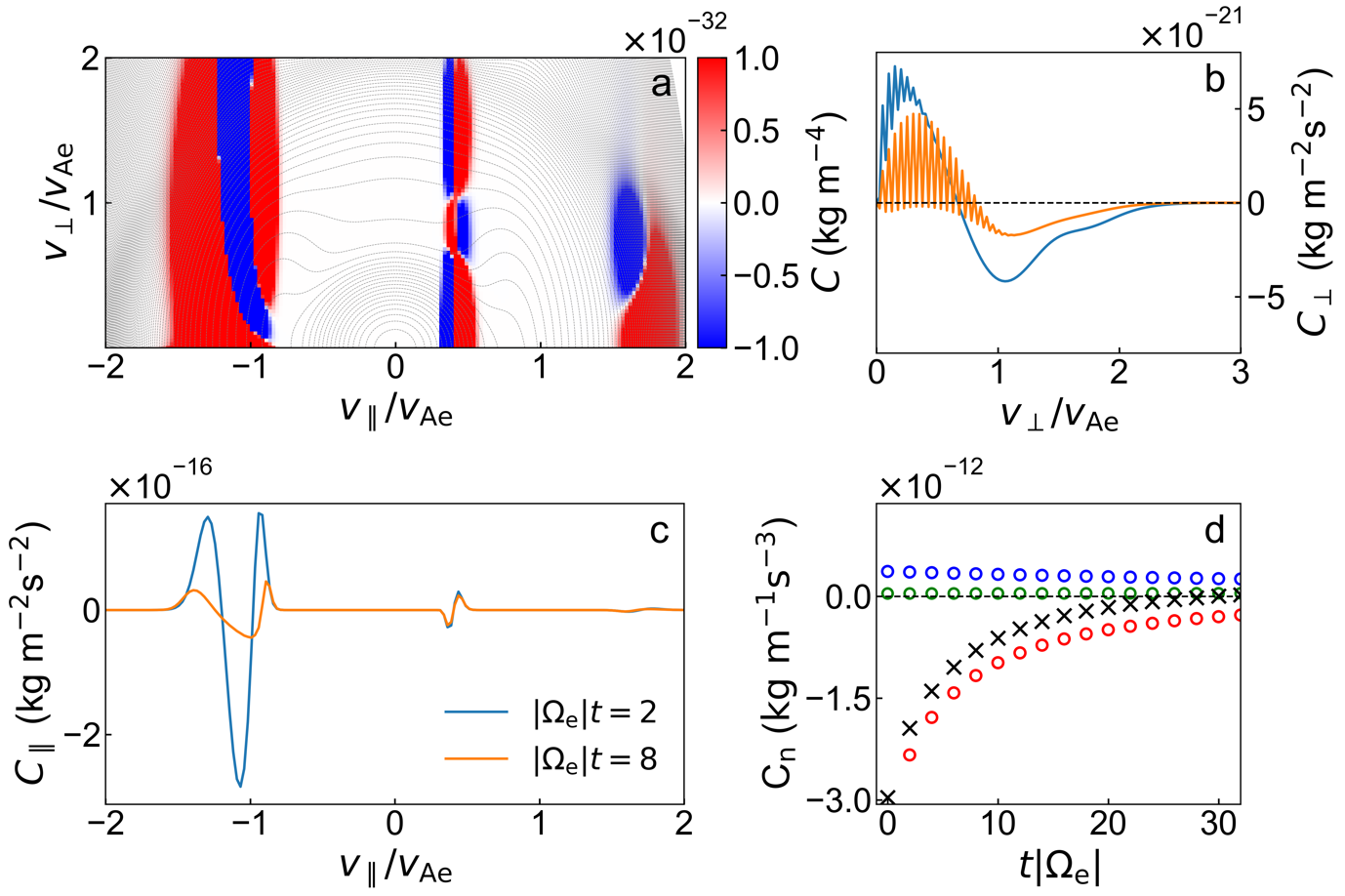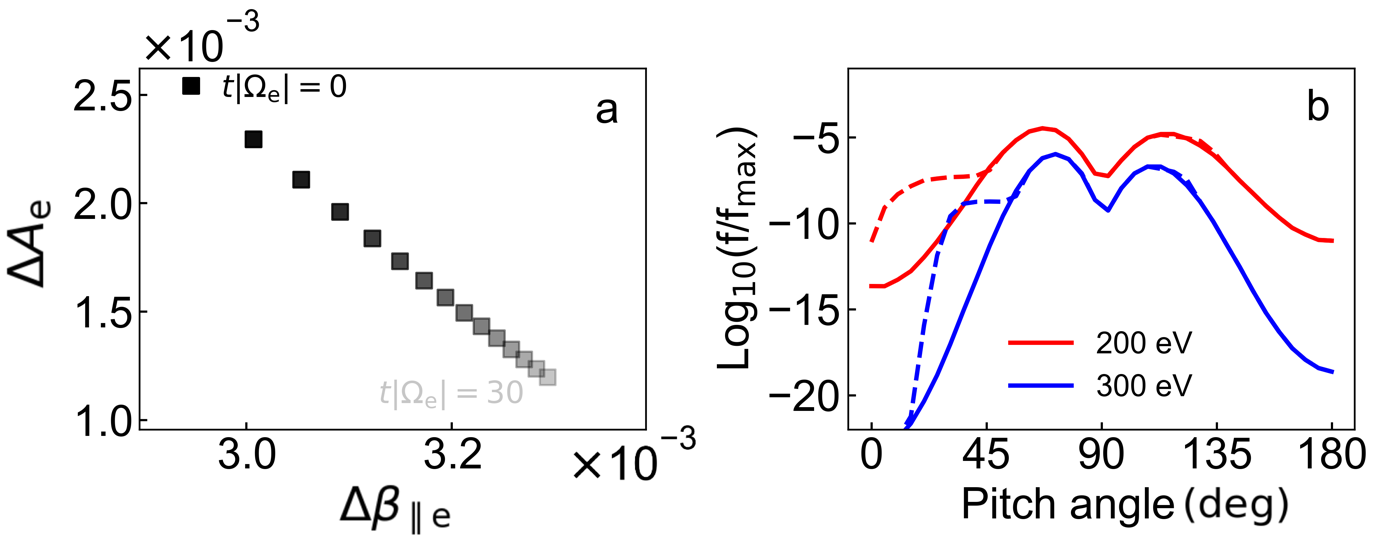Research reveals energy transfer signatures in phase space by whistler waves and electrons in space plasma
Recently, Dr. Jiang Wence and Professor Li Hui from the State Key Laboratory of Space Weather, National Space Science Center, Chinese Academy of Sciences, along with Professors Daniel Verscharen and Christopher Owen from University College London, and Professor Kristopher G. Klein from the University of Arizona, have collaborated on a series of research studies. The related research findings have been published in the international academic journal The Astrophysical Journal.
Based on high time-resolution electron distribution function observations provided by the Magnetospheric Multi-scale (MMS) mission, the research team conducted a detailed analysis of a typical case of whistler wave excitation within a magnetic hole in the Earth's magnetosheath. They used a novel theoretical model to reveal for the first time the phase space characteristics of energy transfer in the electron-whistler wave interaction process. Combining the quasi-linear wave-particle interaction theory with high-resolution MMS satellite observation data, the research results indicate that the contraction motion along the main axis of the magnetic hole structure generates a bidirectional electron beam, primarily completing the transfer of electron kinetic energy to the electromagnetic field energy of the whistler wave through cyclotron resonance. Quantitative results also reveal that electrons in certain phase space regions can make a small contribution to the excitation of whistler waves through Landau resonance. This study elaborates in detail the relationship between electron energy changes in different regions of phase space and the excitation/damping processes of whistler waves, and provides guidance for future direct experimental measurements of energy conversion in wave-particle interaction processes using higher-resolution distribution function observation data from Solar Orbiter and MMS.
Article detail:Jiang, W. et al. Velocity-space Signatures of Resonant Energy Transfer between Whistler Waves and Electrons in the Earth’s Magnetosheath. ApJ 960, 30 (2024). (https://iopscience.iop.org/article/10.3847/1538-4357/ad0df8)

Figure 1. Quasi-linear diffusion paths of electron distribution function based on whistler wave parameters observed by MMS. (a) Range of action of three wave-particle resonance mechanisms. (b) Electron diffusion paths under three resonance mechanisms, with background color indicating the electron distribution function.

Figure 2. Time evolution of the electron distribution function under resonance interaction with whistler waves. (a) Phase-space energy transfer under electron-whistler wave resonance interaction. (b) Distribution of energy transfer rate as a function of electron velocities perpendicular to the background magnetic field direction. (c) Distribution of energy transfer rate as a function of electron velocities parallel to the background magnetic field direction. (d) Evolution of electron kinetic energy over time (detailed details can be found in the article).

Figure 3. (a) Evolution of electron temperature anisotropy and parallel beta value over time. (b) Evolution of pitch angle distribution for electrons at 200 eV and 300 eV over time, solid lines represent the initial state, and dashed lines represent the final state at t|Ωe |=30.


